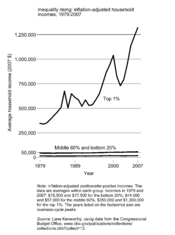SOC-4
A. Black
Mon-Thurs 12:30pm-2:00pm
Student ID: 0516659
Introduction
Wealth inequality in the United States is becoming a popular topic in today's world. It grabbed my attention when a friend of mine showed me a video that was going viral online called "Wealth Distribution in the USA - SHOCKING!" I watched it and it brought up a lot of questions to why the inequality is so substantial between the wealthiest in our country and those in poverty. Such an unequal distribution of wealth now puts the United States in the same class as the more corrupt underdeveloped countries, and not with the developed nations of the world. I will cover in this paper how the media is reporting on this topic and what perception(s) they are portraying to the general public good or bad (Chaffee. 2012).
Credit Suisse Global Wealth Databook
According to the latest edition of the world's most thorough study of wealth-distribution in the United States performed as the Credit Suisse Global Wealth Databook reported," in the U.S.
75.4% of all wealth is owned by the richest 10% of the people. The comparable figures for the other developed countries are: Australia 50.3%, Canada 57.4%, Denmark 72.2%, Finland 44.9%, France 51.8%, Germany 61.7%, Ireland 58.4%, Israel 68.9%, Italy 49.8%, Japan 49.1%, Netherlands 54.6%, New Zealand 57.6%, Norway 65.9%, Singapore 61.1%, Spain 54.0%, Sweden 71.1%, Switzerland 71.5%, and U.K. 53.3%" (Zuesse. 2014). This study clearly shows how big the gap is between our upper and lower class compared to the other developed nations of the world with only three other barely cracking the 70% mark. The other countries that are in this class along with the United States are: Chile 72.5%, India 73.8%, Indonesia 75.0%, and South Africa 74.8% (Zuesse. 2014). Less developed countries, but the US's percentage is...


